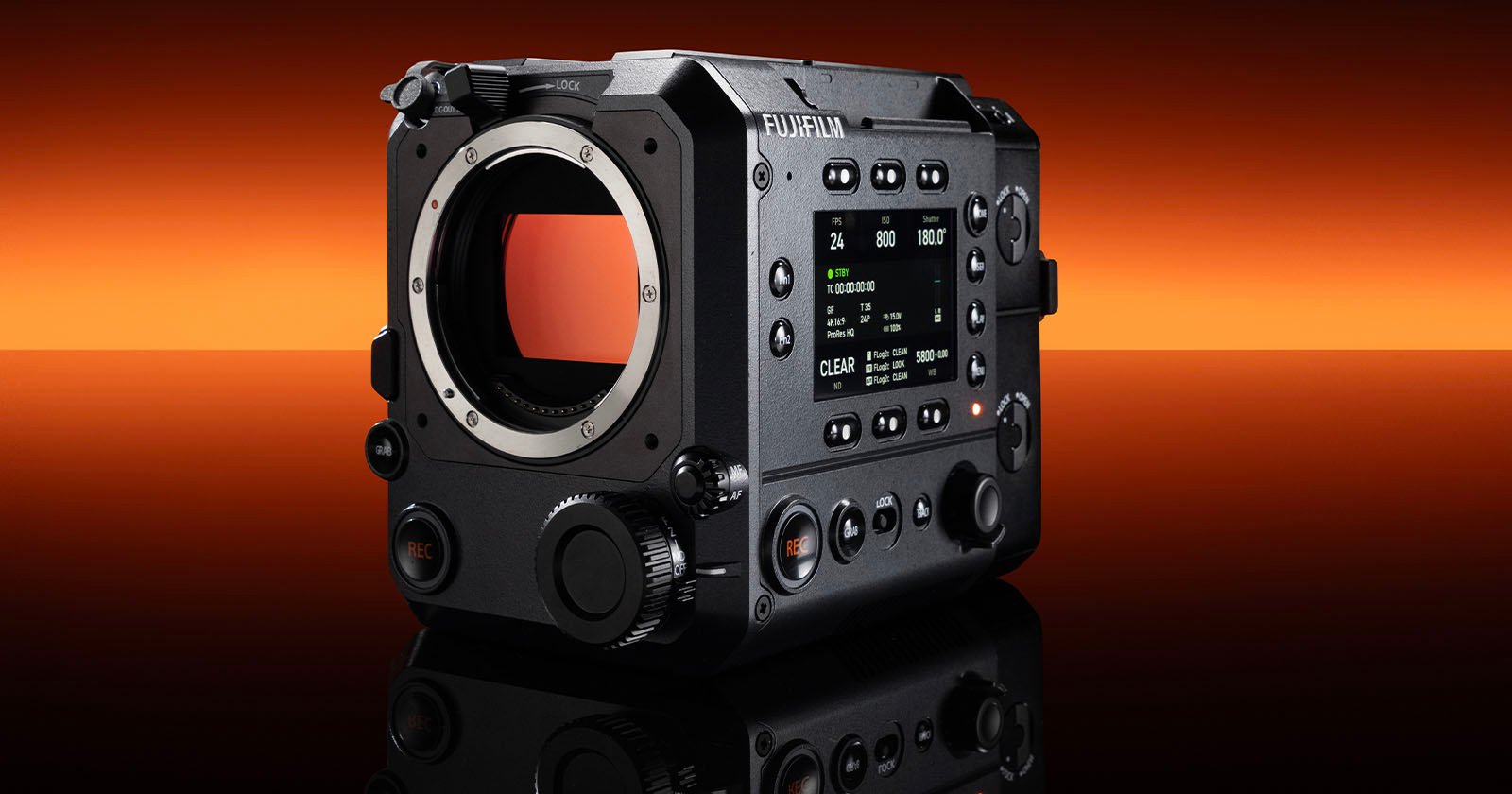
Earlier this month, Fujifilm finally fully revealed the GFX Eterna 55, a camera that it had been teasing through smaller releases over the course of the year. This slow reveal of the Eterna 55 was unusual for Fujifilm, but it afforded the company unique opportunities to tailor the product to its intended users.
Developing the GFX Eterna 55
PetaPixel spoke with Yuji Igarashi, General Manager of Professional Imaging Group, Imaging Solutions Division, Fujifilm Corporation, at the 2025 IBC Show in Amsterdam to better understand the company’s goals for the Eterna 55, the challenges with its development, and the unusual way in which the company announced it. That last note was unique for Fujifilm, and PetaPixel pointed this out.
“You are correct that we do not usually start with a ‘product development’ announcement for our cameras, we wait until the product is final,” Igarashi says.
Development announcements for cameras aren’t unheard of. For example, Nikon and Canon both are known to do it for high-profile, professional-level cameras. Typically, however, the goal is to simply reveal that a product exists so that it can provide prototypes to photographers to test the cameras at public events. The Canon R3, for example, was announced as in development ahead of the Olympic Games in Tokyo. Typically, by that point, a camera’s capabilities are already set in stone, and any feedback provided by photographers would have a limited effect on the final product. That’s what makes Fujifilm’s choice to announce the Eterna 55 early unique — that wasn’t the case with this cinema camera.
“By making the announcement early, we were able to talk to many people in the industry openly and gain valuable feedback. By announcing the development of the product prior to the official launch, we were able to gauge reaction to the specs of the camera as we announced them, and use those reactions to continue to evolve the camera’s features during the development process,” Igarashi explains.
Development of the Eterna 55 was particularly challenging for Fujifilm, not just because the camera is physically so different from those it had been making, but also because the user interface and menus also had to be totally re-imagined.
“There are differences in features such as open gate, ND filter, Internal Fan, interface adaptation, but the biggest difference comes from the user interface. It took us a long time to carefully design the menu, button layout, etc., to ensure it meets the requirements of filmmaking, which in many ways are totally different from those of X Series and GFX System digital cameras,” Igarashi says.
Why Cinema?
Photographers who saw Fujifilm was making a cinema camera might have been surprised, considering the company’s bread and butter has been consumer-level photography cameras for many years. That is true, but Fujifilm does have a storied history in cinema through film. While it no longer manufactures cinema film, it wanted to get back into the industry.
“Film, and motion picture film in particular, has been in our DNA since 1934, when the company was established as a film manufacturer for photography, motion pictures, and other photosensitive materials. This is also when our commitment to color science was born. We continued to make an impact in the filmmaking industry, including our cinema lenses such as Cabrio and Premista,” Igarashi explains.
“Now we are expanding our presence in the filmmaking industry through the introduction of GFX Eterna 55. Over 90 years of research, technology, and ingenuity have brought us here — to the point where we’ve developed and launched our first professional filmmaking camera.”
The Eterna 55 is expensive — $16,500 — compared to consumer photography cameras, but it’s pretty affordable in the cinema space.
“We wanted the camera to be accessible to smaller production companies and even individuals, not just as rentals but to own, while making sure the camera performance was professional-grade. It was important to us that the camera have premium features that mattered to this specific audience, but at a price that was more attainable for a wider group of filmmakers,” Igarashi explains.
Fujifilm’s Cinema Ambitions Are Grander
When Fujifilm first announced the Eterna 55, it did not bear its final name. For many months, the camera was simply known as the “GFX Eterna Cinema Camera.” When the “55” was added, the immediate question was whether or not that was because the Eterna brand would be used on more cameras. That answer appears to be yes.
“We see GFX Eterna 55 as the first digital camera dedicated to filmmaking. Our intention is to expand the product offerings available to current and emerging filmmakers,” Igarashi reveals.
“For us, GFX Eterna 55 is the first Digital Filmmaking camera. On top of the color and tonality we are known for, we believe it is important for us to listen to the requests from the market and try to respond as much as possible. We have already announced that we will prepare 10 film simulation 3D-LUTs, from the beginning, and will continue to provide valuable solutions to meet our customers’ filmmaking needs.”
What is next for the Eterna line will very likely be based on the response to the GFX Eterna 55 and what different camera specifications filmmakers will demand. Odds are high the company is listening carefully to what cinematographers and filmmakers are asking for next, and whatever that is, it sounds like Fujifilm has the desire to deliver.



